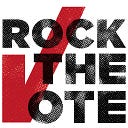The President’s Declared State of Emergency. An Explainer.
The Coronavirus Pandemic Emergency Declaration
On March 13, 2020, President Donald J. Trump signed an emergency declaration over the coronavirus pandemic, enabling the federal government to use funds and other resources to help when “federal assistance is needed to supplement state and local efforts and capabilities to save lives and to protect property and public health and safety.”
As a result of this emergency proclamation, about $40 billion from the Federal Emergency Management Agency can be used by the federal government to fight the coronavirus pandemic. The declaration of emergency also allows the federal government to waive certain regulations on health care providers so that resources can be deployed faster.
According to the Brennan Center, there have been 58 national emergencies called by presidents since 1979. Thirty-one of those national emergencies are still in effect. Examples include:
- Imposing Certain Sanctions in the Event of Foreign Interference in a United States Election (Sept. 12, 2018)
- Declaration of a National Emergency with Respect to the 2009 HINI Influenza Pandemic (Oct. 23, 2009)
- Declaration of National Emergency by Reason of Certain Terrorist Attacks (Sept. 14, 2001)
So, What Exactly is an Emergency Declaration?
A declaration of emergency empowers a government — federal, state, or local — to perform actions not normally permitted. At the federal level, an emergency declaration gives special authority to the president to use in circumstances requiring immediate action.
In the case of the coronavirus, the president’s power in response to this public health emergency is derived from two statues, the Stafford Disaster Relief and Emergency Assistance Act and the National Emergencies Act. The Stafford Act allows the president to provide federal resources to state and local governments during catastrophes. The National Emergencies Act is what actually gives the president the authority to issue an emergency declaration, and enables access to statutory emergency authorities otherwise unavailable to the executive branch. It’s the basic legal framework for a Presidential declaration of emergency.
The Stafford Act and the National Emergencies Act are just two of 136 statutory powers that may become available to the president upon declaration of a national emergency. Emergency powers cover almost every imaginable subject area, including the military, land use, public health, trade, federal pay schedules, agriculture, transportation, communications, and criminal law.
What Does An Emergency Declaration Mean For State and Local Governments?
Every state has its own process and rules for declaring a state of emergency at the state level. All 50 states can declare an emergency but only 34 have specific powers to declare public health emergencies. Local emergency declarations enable a state or city to have easier access to federal aid.
Typically, the declaration is made by a state’s governor through an executive order, granting broad powers that enable him or her to mitigate the effects and impact of an emergency. While those powers vary by jurisdiction, they generally include the ability to impose curfews, order people and traffic off the street, mandate quarantines, ration goods, declare price controls, suspend alcohol consumption and limit public gatherings.
In response to the coronavirus pandemic, all 50 states have declared emergencies, which has given governors the ability to issue stay-at-home and shelter-in-place orders.
Sources: Brennan Center, CNN, CBS, CDC, National Governors Association, NY Times, Washington Post and Wikipedia
